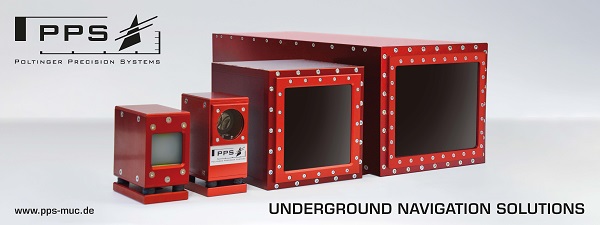Cereixal tunnel on the A6 is the first smart tunnel in Spain
Telefónica, in collaboration with Nokia, Ineco, Stellantis, Centro Tecnológico de Automoción de Galicia (CTAG) and SICE, has sensorized and provided 5G coverage to the Cereixal tunnel on the A-6 (Lugo) of the road network of the Ministry of Transport, Mobility and Urban Agenda, which represents a step towards the smart road that communicates with connected vehicles and thus offers driving assistance.
Telefónica, together with its project partners, has turned the Cereixal tunnel into the first in Spain to be connected to vehicles. The intelligent tunnel sends information to drivers about the weather conditions at the exit, works, slow vehicle warnings, possible congestion, accident, road obstacle, presence of pedestrian, vehicle in the opposite direction or sudden braking during its journey through it, in addition to the notice of entry of an emergency vehicle.
For this, the specific capabilities for vehicle communications C-V2X (cellular vehicle-to-everything) and sensorization IoT (Internet of Things) and edge computing of the 5G network are used.
Likewise, both the sensors (opacimeter, sliding pavement, visibility, weather station) and the installed cameras (DAI, thermal, detection of dangerous goods, detection of electric vehicles) allow monitoring the status of the tunnel, generating information and sending it to a tool monitoring so that the infrastructure managers can view all the information collected by the IoT sensors, analyze it and, if necessary, issue alerts and warnings to the vehicles passing through it.
This initiative is developed within the framework of the 5G Galicia Pilot, promoted by the Ministry of Economic Affairs and Digital Transformation through Red.es for the development of this technology in Spain through a public call for aid that is co-financed by the European Fund of Regional Development (ERDF) and with the collaboration of the Ministry of Transport, Mobility and Urban Agenda in its commitment to the digitization of roads, especially in areas with such unique characteristics as tunnels that require very special attention.
For the implementation of the use cases it has been necessary to deploy 5G antennas that provide coverage both inside and outside the tunnel, IoT sensors and video cameras, a MEC (Multi-access Edge Computing) server near the base station that provides coverage to the vehicles and a 5G router in the tunnel itself to be able to collect the information of what is happening in it through the IoT sensors and installed cameras.
As for the vehicles, they have installed a communications unit called TCU (Transmission Control Unit) to become connected vehicles. In the pilot, in addition, an application has been developed that can be installed on a 5G smartphone so that drivers receive notifications even if their vehicle does not have TCU installed, thus increasing the number of vehicles connected to the tunnel.
Nokia provides end-to-end connectivity infrastructure to the project, including Nokia AirScale 5G radio equipment, the virtualized 5G core, a MEC server and the Nokia 5G FastMile Gateway deployed in the tunnel as a 5G router.
CTAG, as a specialized technology center and leader in connected mobility, has integrated its developments in cooperative systems into prototype vehicles, which include both the on-board 5G communications unit, as well as the different C-V2X cooperative services that have also been developed by CTAG. Likewise, it has deployed an ITS server in the MEC to allow communication between the infrastructure and the vehicles. Additionally, together with the rest of the partners, it has executed the validation and tuning tests.
For its part, Stellantis provides the vision of the manufacturer in terms of technical specifications and integration in the vehicle on the 3 demonstrators used in the project (DS7, DS4 and Peugeot Traveler). The test results are analyzed by the Group's engineers in order to accumulate experience for the development of its future vehicles.
Within the Cereixal tunnel and its surroundings, SICE has been responsible for the integration of environmental sensors, incident detection cameras and license plate and dangerous goods readers, as well as different equipment whose information is processed and sent in real time to the systems. from the rest of technology partners. The information processing includes the analysis of the traffic state, as well as the identification of the environmental mark of the vehicles and the type of dangerous goods transported. In addition, alerts are sent such as adverse weather conditions, low visibility levels, the presence of pedestrians in the tunnel or stopped vehicles, or circulating at a reduced speed or even the opposite.
In this project, Ineco has developed a system capable of integrating all the information captured by the tunnel sensors and the weather station, as well as receiving, managing and sending all the events that are broadcast or received by the connected vehicles. The development provides tunnel managers with a dashboard with all the necessary information, including live video images, to know in real time what is happening inside the infrastructure. As a result, those responsible for operations can have all the information centralized in the system; access it from any geographical point; interact with the vehicles / drivers themselves and, ultimately, carry out a more efficient, fast, interactive and safe management.
As Mercedes Fernández, Manager of Innovation at Telefónica Spain, has highlighted, “initiatives such as the implementation of the Cereixal tunnel, which provide intelligence to the road and facilitate assisted driving, allow improving the information available to the driver to make their decisions and thus improve road safety. The great connectivity capabilities of the 5G network, low latency, maximum reliability and high bandwidths constitute a fundamental pillar in the ecosystem of the connected car that evolves from driving assistance to autonomous driving. "
Emilio Navarro, Account Manager for Telefónica Spain at Nokia commented: “this type of cross-sector collaboration projects are a magnificent way of validating not only the technology but the final application and the value for all parties involved and ultimately towards society. Through this pilot we tested the benefits of 5G technology applied to driving assistance where the immediacy in the transmission of information is critical for safety ”.
According to Francisco Sánchez, Director of the Division of Electronics and ITS of CTAG, “this project allows evaluating and demonstrating the potential of 5G technology in its first steps towards future connected and automated mobility. In this sense, the specific characteristics of 5G technology will make it possible to significantly increase the levels of automation of vehicles on highways and highways and extend its use to complex scenarios such as urban or rural environments ”.
For his part, Laudelino Laiz, Stellantis Head of Innovation in the Iberian Peninsula, has indicated that “this new experimentation complements the actions of the Stellantis global innovation network. Projects like this allow to form the ecosystem that is necessary to implement to develop connectivity solutions based on 5G technology, in this case at the service of security in a unique environment such as a tunnel. They are essential and are at the center of our innovation strategy in this area ”.
“We are grateful to Telefónica Spain for the opportunity it has given us once again to value not only our skills related to the connected vehicle by integrating the information from the road infrastructure with the connected car ecosystem through the 5G network, but also the experience in the technological management of infrastructures that SICE has been able to demonstrate in more than 300 km of tunnels on the five continents ”, Francisco Moya, manager of Environment and Mobility at SICE, highlighted.
“At Ineco we apply the most avant-garde technologies - such as 5G, the IoT or the Digital Twin - to build the transport infrastructures of the future today. We believe that to ensure safe, sustainable and connected mobility it is necessary to study all these new technologies, identify those developments that can bring greater benefit to society and apply them in innovation projects that demonstrate their viability. And that's precisely what we have done in the 5G tunnel projects, as well as in the railway inspections with 5G drones ”, commented José Ángel Higueras, Ineco's Director of Roads, Mobility and Intermodality Business.
cover tunnel photo by: Matt Brown from London, England / CC BY
Copyright 2019-2024 TunnelContact.com







